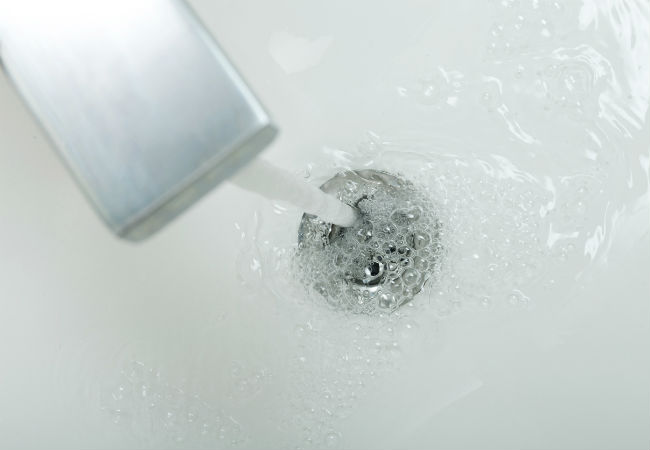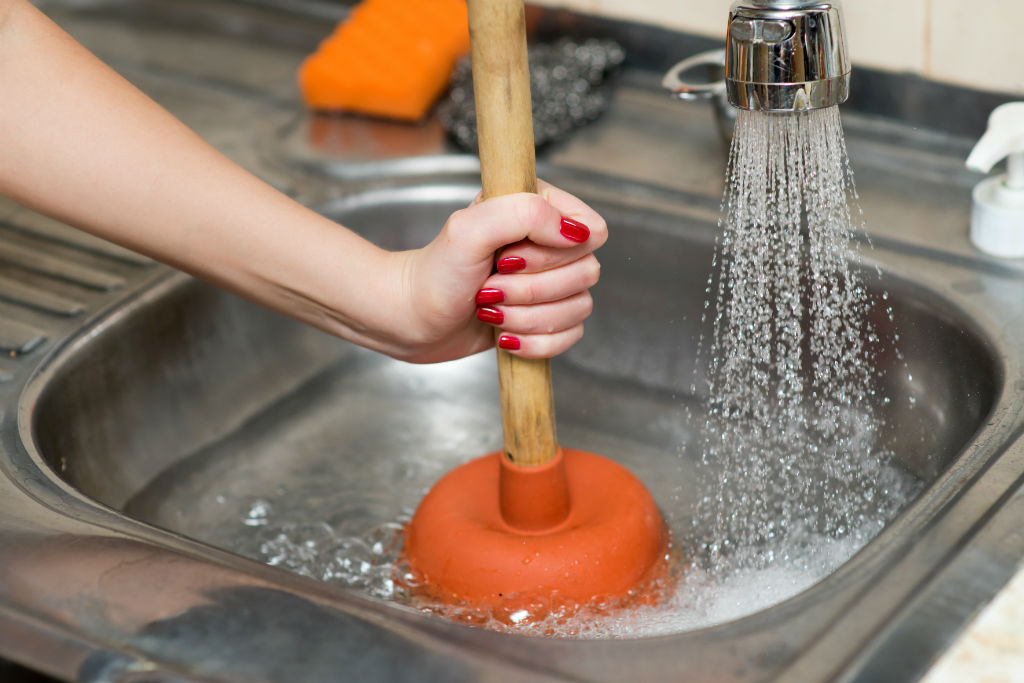This article following next relating to How to Fix a Slow Draining Sink is really informative. You should see for yourself.

Introduction
We've all existed: You're brushing your teeth or cleaning your hands, and you discover the water merging in the sink. As opposed to swiftly swirling down the drain, it sticks around, transforming your once-refreshing early morning regimen into a small swamp scene. A slow-draining sink isn't just irritating; it's frequently a sign of larger plumbing problems lurking under the surface. The bright side is that a lot of slow-draining sinks can be repaired with a little expertise, a few standard tools, and some perseverance. All set to tackle this job head-on? Allow's roll up our sleeves and dive right in.
Understanding the Causes of a Slow-Draining Sink
Prior to you start poking around in your pipelines, it assists to know what may be triggering the downturn. Recognizing the source makes it simpler to pick the right solution.
Tools and Products You'll Require
The right devices make all the distinction. Thankfully, you won't require a totally equipped plumbing professional's van to finish the job.
Step-by-Step Overview to Fixing a Slow-Draining Sink
Now, let's enter into the nitty-gritty. This step-by-step process will certainly assist you via basic methods to recover your sink's drainage.
Action 1: Remove and Tidy the Stopper
Often, the stopper (that little plug you push down to obstruct water) is the first perpetrator. Remove it meticulously and clean off any kind of hair or gunk entraped around its base. Rinse it extensively before putting it back in place.
Action 2: Utilize a Bettor to Dislodge Debris
Got that plunger prepared? Setting it over the drain and provide it a few firm pumps. The concept is to develop suction that can loosen any type of blockage. If you see little bits of particles drifting up, you get on the ideal track.
Action 3: Try a Drainpipe Serpent or Wire Wall Mount
If the bettor does not suffice, it's time to highlight the drainpipe serpent. Carefully feed it into the drain and spin as you go. You may feel some resistance-- that's likely the clog. Maintain twisting and pulling till you eliminate the blockage. If you don't have a drainpipe snake, an aligned wire hanger can operate in a pinch.
Tip 4: Apply a Do It Yourself Drainpipe Cleaner
An all-natural cleaner made from cooking soda and vinegar can break down recurring crud. Pour half a mug of cooking soda into the drainpipe, adhered to by half a mug of vinegar. Allow it fizz for about 15 mins, then flush with warm water. This chemical reaction typically does marvels for minor clogs.
Tip 5: Rebuild and Examine the Sink
Put everything back with each other and run the faucet. Does the water now swirl away at a respectable speed? If yes, give yourself a pat on the back. If not, don't despair-- there are still a couple of more tricks up your sleeve.
Crucial Tools for Do It Yourself Services
A bettor is your best beginning point. A little, sink-sized plunger creates suction that can dislodge minor blockages. For more persistent blockages, a drainpipe snake (in some cases called a plumbing technician's auger) works wonders. A set of handwear covers, a flashlight, and maybe a pair of protective safety glasses are additionally useful.
Suggested Cleansing Solutions
Mild dish soap and warm water can assist break down greasy build-up. A mixture of cooking soft drink and vinegar is a time-tested home remedy, and chemical cleansers offer a more environment-friendly technique. Maintain chemical drainpipe cleaners as a last option, as they can be harsh on your pipelines.
Usual Culprits Behind Slow Drain
So, what's blocking things up? Usually, it's a blend of everyday debris-- think hair, soap scum, toothpaste residue, and leftover food bits. Gradually, these tiny bits collect and hold on to the pipeline walls, progressively tightening the flow and making it harder for water to go through. In many cases, natural resource from difficult water can also include in the crud, producing the best storm for persistent blockages.
When is it Time to Take Action?
If you observe the water draining slower than common, it's an excellent idea to interfere earlier rather than later. Waiting also long could bring about complete clogs, unpleasant smells, or even pipeline damage. If the water takes greater than a couple of seconds to remove after switching off the tap, consider it a red flag and prepare to put on your do it yourself hat.
Safety And Security First: Precautions and Preparations
Prior to you launch into unclogging setting, think about safety and security. You're taking care of potentially unclean water and particles, so slip on a pair of handwear covers. If you're making use of chemical cleaners, make sure the space is well-ventilated and follow the directions on the label.
Protective Equipment and Work Space Setup
Set some old towels or cloths around the sink location to catch sprinkles. Remove any type of things that might get in your way, like soap dispensers or toothbrush holders. Make sure you have excellent lights-- get hold of a flashlight if needed.
Alternative Approaches for Stubborn Clogs
Not all obstructions are developed equal. If your sink still refuses to comply, take into consideration these different solutions.
Baking Soda and Vinegar Technique
We already discussed this, however it deserves keeping in mind again. This gentle, environment-friendly approach is much safer than chemical cleansers and commonly rather effective.
Chemical Drain Cleansers
Enzyme-based cleaners utilize all-natural microorganisms to absorb raw material. They're an exceptional selection if you're aiming to stay clear of rough chemicals. Simply keep in mind, they might take a bit longer to function their magic.
Chemical Drain Cleaning Company: Pros and Cons
Chemical cleaners can blow up with challenging obstructions quick, yet they're not without disadvantages. They can generate heat and fumes, damages pipes if made use of excessively, and position environmental risks. Utilize them moderately, and constantly comply with the directions meticulously.
Safety Nets to Maintain Your Sink Flowing
Prevention is the most effective cure. By embracing a couple of straightforward behaviors, you can maintain your sink from reducing in the first place.
Regular Cleaning Up Behaviors
Clean down the sink container and component area on a regular basis. Eliminate hair or food particles before they have a chance to wash down the drain.
Staying Clear Of Unsafe Compounds Away
Think twice before unloading coffee grounds, oil, or fibrous veggie scraps down the sink. These wrongdoers hold on to pipeline wall surfaces, producing blockages gradually.
Regular Maintenance Checks
Schedule a quick month-to-month assessment. Run hot water with the sink for a couple of minutes, taking notice of the flow. If it appears slow-moving, act fast prior to it comes to be a full-on blockage.
When to Call an Expert Plumber
Sometimes, no matter how tough you try, that clog just won't budge. That's when it's time to generate the pros.
Signs That Suggest a Much More Severe Issue
If your sink drains pipes slowly regardless of multiple attempts, or if you see water backing up in other components (like your shower or toilet), you might have a much more severe pipes concern lurking deeper in the system.
Balancing DIY Initiatives with Expert Help
While DIY can conserve you money and supply a sense of accomplishment, there's no embarassment in calling a professional. An expert plumber can assess your entire pipes configuration, guaranteeing there's no underlying damage or lasting trouble that could cost you more down the road.
Contrasting Costs and Long-Term Solutions
Before choosing, consider the big picture. An inexpensive, quick fix could address the issue momentarily, yet purchasing a more long-term service might save you cash and stress and anxiety in the future.
Weighing the Expenditures of Do It Yourself vs. Professional Fixes
Do it yourself fixes often cost little greater than the rate of a bettor or a container of cooking soft drink. Professional services, on the other hand, come with a cost but might protect against repetitive concerns and pricey repair work later on.
Buying Quality Fixtures and Upgrades
If your sink's layout contributes to regular blockages, it might be worth upgrading to higher-quality components or modifying the pipes design. Consider this a financial investment in your home's capability and convenience.
Verdict
A slow-draining sink can feel like a small inflammation, however it's often an indicator that your plumbing requires a little TLC. By understanding the root causes, utilizing the right devices and methods, and devoting to straightforward safety nets, you can maintain your sink flowing openly. And when all else fails, never ever think twice to call an expert-- your home's pipes is worth the investment in care and upkeep.
4 Tips to Fix a Slow Draining Sink
Removing the Pop-Up
This is a great place to start when it comes to troubleshooting a slow draining sink. If your sink has a pop-up, carefully take it out and remove debris that has built up around the tool. This will also allow you to see if there are any significant blockages in the drain that you can pull out on your own to help clear up the issue.
Use a Zip-It Tool
Like a snake for a large drain, a zip-it tool helps clear out any debris or hair from a sink drain. A tool like this can be used with a drain that pops out or not as it s thinner than most snake-like tools.
Use a Drain Cleaner
Whether making an at-home cleaner or buying a solution at the store, this is a common fix many turn to when it comes to a slow draining sink. There are several options available for purchase at local supermarkets, but for those who prefer to create their own solution, one of the most common is the following.
How to Unclog a Drain Naturally
Pour boiling water down the drain Pour cup of baking soda down the drain Pour cup of vinegar down the drain Wait 10 minutes Pour boiling water down the drain again Turn on the hot water faucet to clear out the solution Use a Plunger
As a worst-case scenario option, a plunger may be a good option for those who are still struggling to get debris out of their drain. This could be especially useful if there is a large item that you suspect may be significantly stuck down the drain.
https://www.abaileyplumbing.com/blog/2021/august/4-tips-to-fix-a-slow-draining-sink/

We are very involved in Solved! How to Fix a Slow Sink Drain and I hope you enjoyed reading the article. Enjoyed reading our write-up? Please share it. Let someone else find it. I love reading our article about 7 Ways To Fix A Slow-Draining Sink Before You Call A Plumber.
Book A Free Estimate